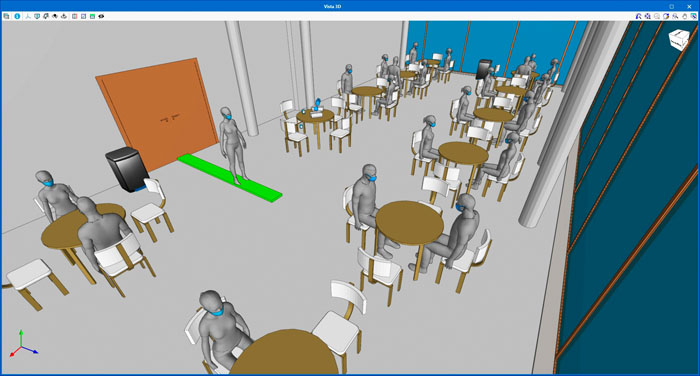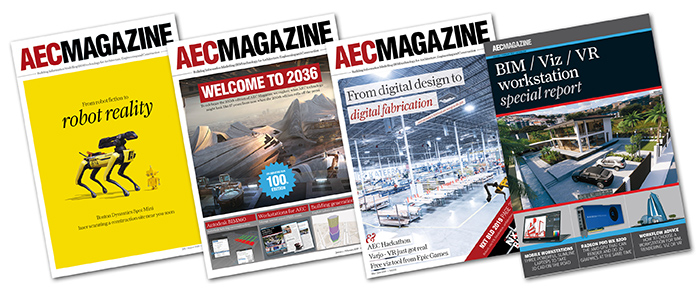Free software can be used to design, calculate and implement safety measures in spaces in response to virus
Open BIM Covid-19 is a free software tool designed to help minimise the spread of the virus through the planning and implemention of safety measures in buildings and open spaces.
The software can be used to optimise the space of facilities as well as design circulation and evacuation routes. It takes into account criteria such as interpersonal safety distance, placement of furniture and the installation of separators. A second phase of development will allow users to analyse the pattern of virus dispersion and spread in buildings using computational fluid dynamics (CFD).
Based on Open BIM technology and using IFC 4.0 files, Open BIM Covid-19 allows the results to be viewed in 2D, 3D, Augmented Reality and Virtual Reality. The software also generates detailed reports containing the maximum allowed capacity together with graphic documentation to design the most appropriate layout. In this way, business managers, for example, can optimise the space of their facilities, whether they are shops, restaurants, hotels of floors of buildings.
Open BIM Covid-19 has been developed by Spanish AEC software developer Cype. The software has been translated into six languages and can be adapted to the national safety regulations against Covid-19 of ‘any country in the world and at any phase’. In Spain, Cype has followed the criteria established in the BOE (Official State Gazette). BOE requires the installation of bins and the provision of hydroalcoholic gels or disinfectants with virucidal properties authorised and registered by the Department of Health to clean hands, or when not possible, soap and water.
“In these cases it would be advisable to plan the installation of a reception point with hydroalcoholic gels and a mask or glove dispenser whilst detailing the desirability of putting up signs of interpersonal distance, warnings of the need to wash hands or to avoid touching the face etc.,” explains Carlos Fernández, director Cype. “All of these elements are included in the program.”
Cype is currently working on a second phase of development which uses CFD to simulate how the virus might spread, taking into account the speed and dispersion pattern of particles in coughs and sneezes.

If you enjoyed this article, subscribe to our email newsletter or print / PDF magazine for FREE







